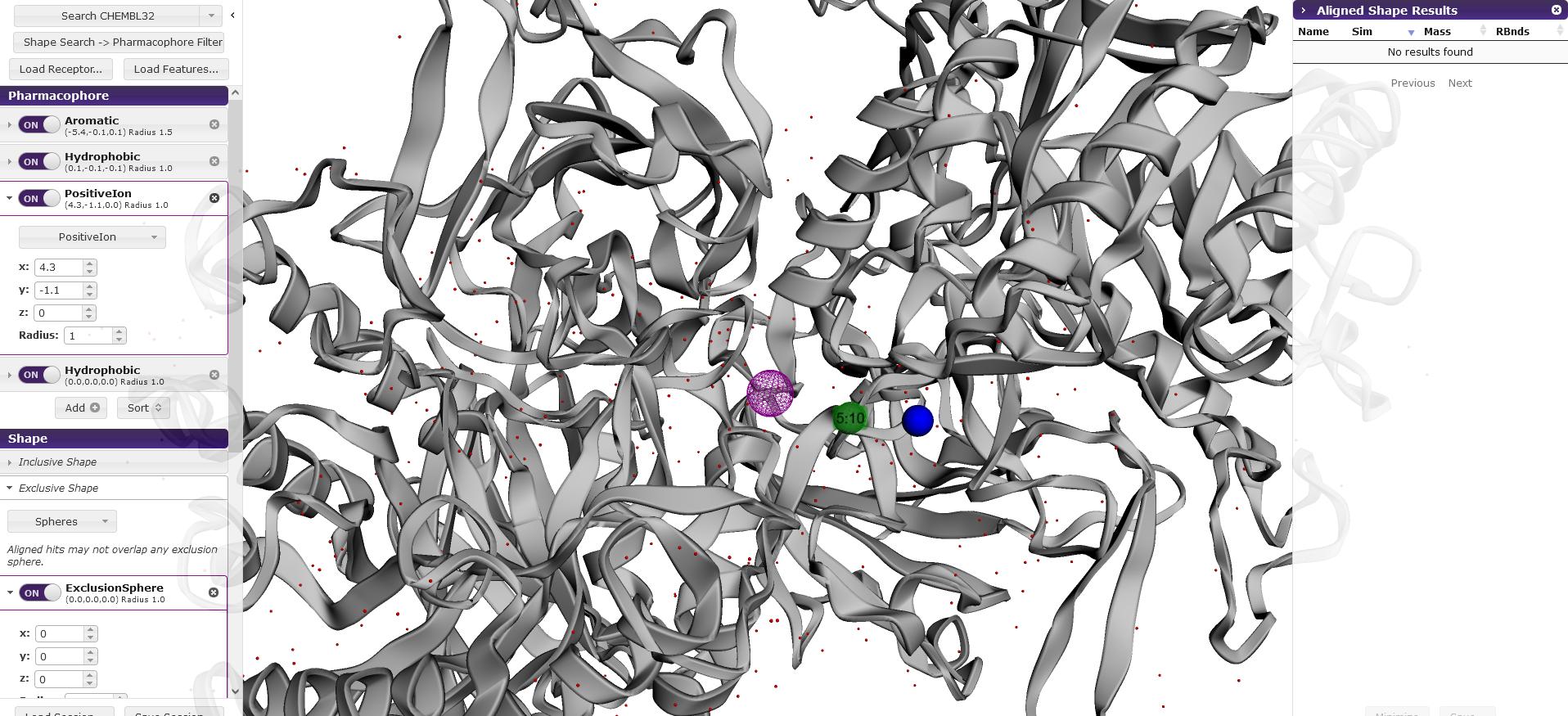Just put a know ligand inside the active site of your pdb , the webserver will calculate the Features of the ligand/pharmacophore then you can select the ones you want and the database where to search for molecules with the same Features. All the software used to crate a Features file seems to be not for free or really old (not sure if you can trust that code anymore) if you need some particular Features , you'll have to draw a FAKE LIGAND by yourself that carries them ... but thats its just my naive idea – –
se my resul using E.coli 3LPF pdb carrying Z77: 1-[(6,7-dimethyl-2-oxo-1,2-dihydroquinolin-3-yl)methyl]-1-(2-hydroxyethyl)-3-(3-methoxyphenyl)thiourea ligand and selecting first 4 Pharmacophire Features extracted by the webserver from it and running them against the CHEMBL32 database, first hit selected.

EDITED
The instructions above didnt work for me , loading 3lpf.pdb from my PC to the webserver for some reasons doesn't get the Z77 ligand. So the only option is to draw the Features by yourself using the Features menu, played a little bit with it but not well enough to get results , also the tricky part here would be to set the right coordinates for your ligand-Features, but overall the Tool looks very good, really fast and with a nice intuitive interface.
Still would like to get ligands from PC uploaded pdb file too , so that I could test my Fake-Ligand theory.

RE-EDITED :
found a third way :
load your pdb from your pc , save the session , modify the pharmit.json file you save adding the FAKE-LIGAND. To have an idea of how to put your FAKE-LIGAND inside the json file , have a look at a saved session from a session started suppliying a pdb code instead of a file. In my experiment I loaded the modified Z77 ligand stiched to a session started from a downloaded 3lpf.cif and saved to a .json

auchhh !!!!! it does load the ligand but doesn't create the Features , don't know if it is because the ligand is cut in 2 pieces or because it just doesnit work like when I uploaded a .pdb containing a ligand.
At least you have a way to position the Features you'll add by hands afterwards.
***think that this one wont never works because the Features for the ligand are saved in the .json (first entry in the dictionary) the webserver calculates them once and then save them to be reloaded); yes it does do that , I can delete the ligand entry from .json and reload the session getting the Features but not the ligaand.
FOURTH EDIT (last one I swear) :
Tried new approach: loading Features menu uploading Z77 from https://www.rcsb.org/ligand/Z77 page, both model and ideal molecule as .sdf file. The ligand gets uploaded and Features calculated by the webserver , obviously the model molecule doesn't get located in the active site of the molecule, so I guess you could draw yor FAKE ligand using something like PyMOL exactly where you want it to be and then upload it with the load Features menu.
My uploaded Z77_ideal.sdf pic:

So that would provide ground for my FAKE-Ligand approach



